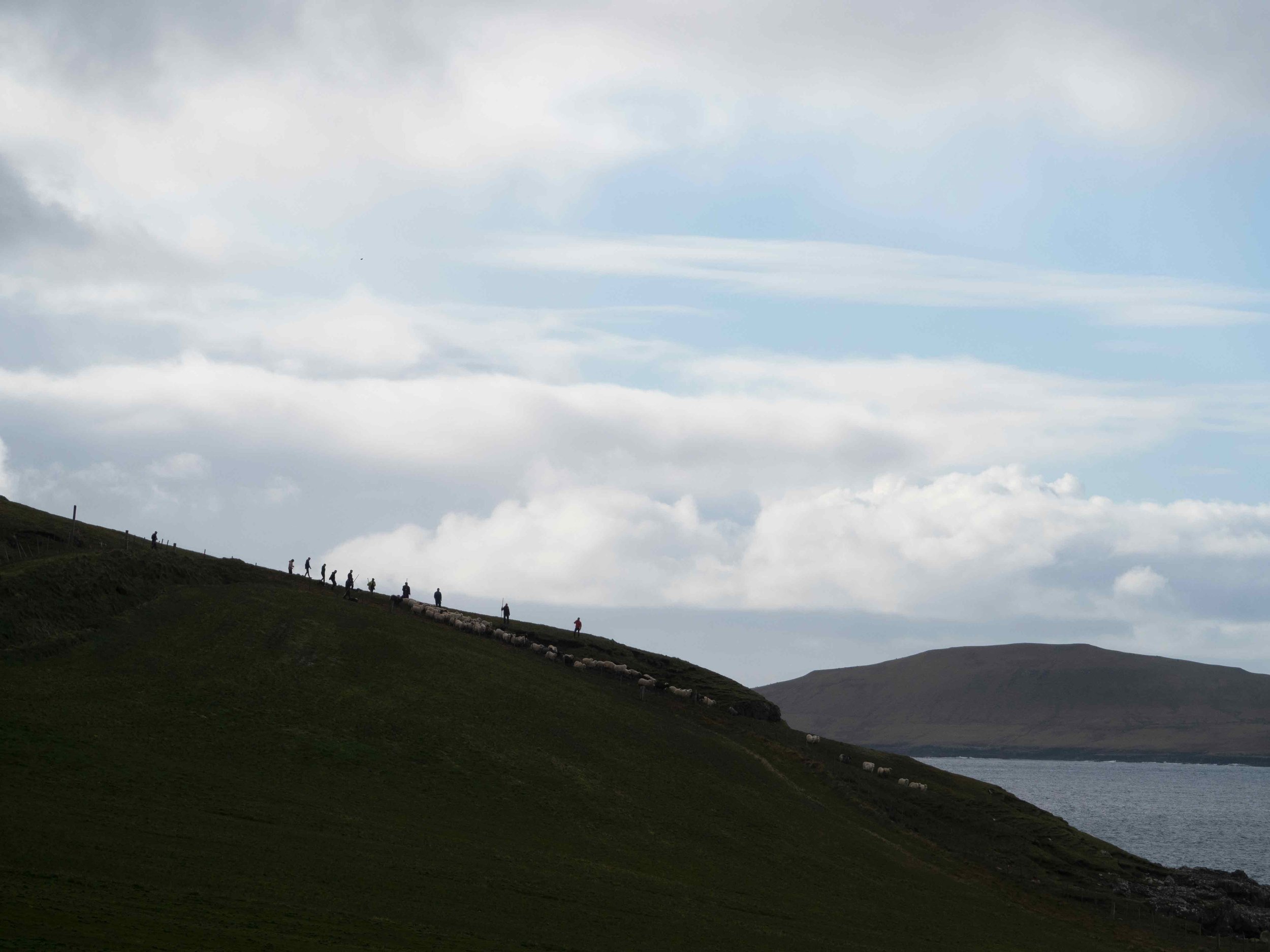Spring is the lambing season, summer is the wool-sharing season, autumn is the slaughter season, and winter is the pairing season. That is the cycle of sheep farmers’ lives. For many non-Faroese people, the slaughter season can seem a bit much, but it is when the cycle is completed for the Faroese. This is where we get our meat for the following year. Although we like to say that the sheep outnumber the human population on the islands, we don’t have that many sheep, and we are not self-sufficient with lamb meat; we import meat from other countries, too. The sheep slaughtered here on the islands are primarily used for traditional Faroese dishes, like dry lamb meat and fermented lamb meat—a true delicacy on the Faroe Islands.
After the sheep have been beheaded, the big job is to separate the body from the sheep’s skin. This is a reasonably heavy job, especially for the untrained. The challenge is to take off the skin without getting any cuts on the meat. It is all about manpower and technique. When done beautifully, the meat is intact, with a nice natural surface, and the sheepskin is ready to be tanned into a beautiful sheepskin. All organ meats, including blood, are saved for different delicious dishes. The head is salted, stripped for wool and later eaten. The meat is hung up to dry - the first step is the fermented meat (ræst), which we can enjoy in a few months, and if it is allowed to dry more, it becomes skerpikjøt, the traditional dry Faroese meat.
In Autumn 2022 and 2023, we visited a few sheep farmers to learn more about the slaughter and what it involves. One of the farms we were lucky to get insight into, was the farm on Syðradalur, on Streymoy. Below are a few photos from our visit.















